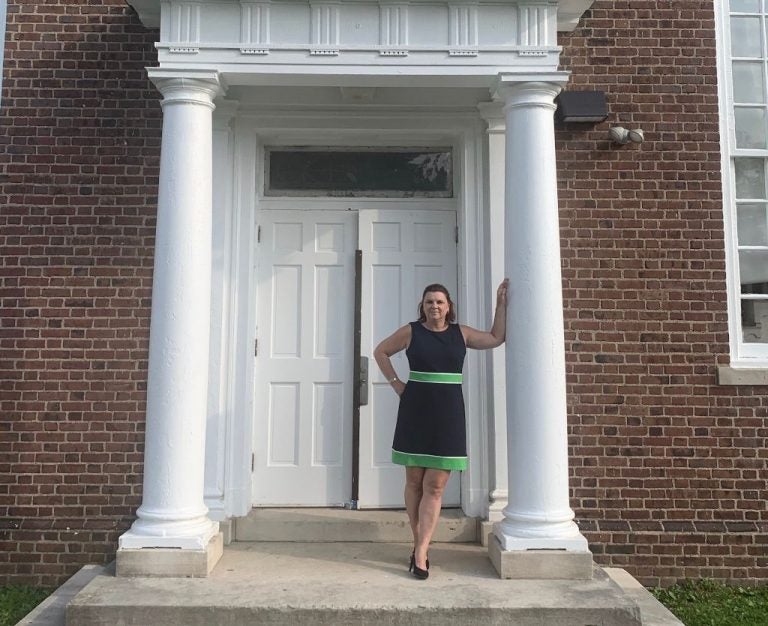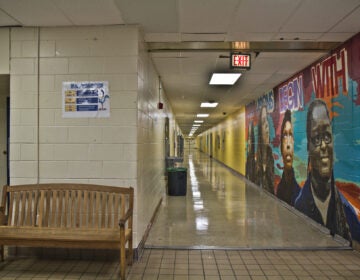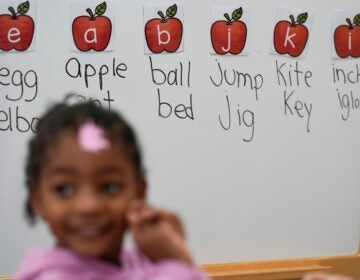Pennsylvania should increase early childhood investment by $250 million, national report says
It would take another $57 million to fully fund the state’s Head Start program, which serves the poorest children, the NIEER analysis shows.

Providers like Leslie Spina, whose Kinder Academy has five centers in Philadelphia, have been struggling not just to maintain their pre-pandemic quality, but to simply stay in business. (Courtesy of Leslie Spina)
This article originally appeared on Chalkbeat Philadelphia.
—
Pennsylvania would need to increase its spending on preschool by $250 million per year to assure all eligible children have access to a high quality program, according to the annual report by the National Institute of Early Education Research.
It would take another $57 million to fully fund the state’s Head Start program, which serves the poorest children, the NIEER analysis shows.
In the report, the NIEER, based at Rutgers University, recommends a significant new investment in early childhood education for 3- and 4-year-olds nationally — paid for by both the federal government and the states — with a goal of making preschool free to all low-income children by 2040 and all children by 2050.
“Congress has increased federal support for child care in recent years,” said Steve Barnett, NIERR’s founder and co-director. “We’re at historic levels. But we’re far from having enough money to fund even half the eligible kids.”
Tracy Campanini, Pennsylvania’s deputy secretary in the Office of Child Development and Early Learning, said that by her department’s own accounting, 60% of children eligible for the array of state and federal programs — Child Care Works, Pre-K Counts, and Head Start — are not served. Her estimate counts all families under 300% of the federal poverty level, which is $26,500 for a family of four.
“We recognize there are unmet needs,” she said. “We are trying to take an equitable approach to meet our goals.”
Harrisburg has increased spending on early childhood, with an emphasis on expanding access in the most vulnerable communities. Last year, the state spent $334 million for early childhood education, an increase of $36 million from the year before.
The number of children with access to Pre-K Counts has more than doubled, to more than 60,000 students. Head Start, which serves families under 100% of the federal poverty level, also has seen significant growth, Campanini said.
But even with these investments, Pennsylvania is nowhere near the level of funding that NIEER recommends. The report calls for $12,000 per student, compared to the $6,850 per student the state spends now.
And while Pennsylvania has increased overall spending on early childhood, it has not increased the basic rate of reimbursement for child care services since 2007.
Quality or access?
Maintaining quality and standards is a tall order in the state’s complex public-private system of child care and early childhood education. The state measures quality through its Keystone Stars rating system, established in 2003, which sets standards for teacher training and credentials, classroom practices, and financial soundness, among other benchmarks. Child care centers are rated from one star through four, and the lower quality centers are helped to improve.
Most care is offered by private centers that get subsidies through several different state programs for students, depending on need, including Child Care Works, Pre-K Counts, and Head Start. Many centers serve a combination of subsidized children and families who pay the full cost.
“There are many more children eligible than there are subsidy dollars to go around for them,” Barnett said.
In some ways, that can lead to a difficult choice: To serve more children or improve the quality of programs for the children who are already enrolled. It can be hard to do both.
Pennsylvania’s child care system also took a hit in the pandemic, according to the NIEER report. As costs soared to implement COVID-19 safety measures, enrollment decreased, leading to the loss of per-student subsidies and tuition payments.
Providers like Leslie Spina, whose Kinder Academy has five centers in Philadelphia, have been struggling not just to maintain their pre-pandemic quality, but to simply stay in business.
Overall, her enrollment has gone down from 500 to 270; about 85 of those students are learning virtually.
Spina said since the pandemic she had to close one center permanently in Mayfair. But she was able to open another in which she had invested more than $3 million before the pandemic by dipping into emergency funds, although its opening was postponed from June to September.
Many of her families are immigrants “who live in multi-generational families, and they are afraid that the children will bring it home to grandparents,” she said. “And lots of people have not gone back to work…while people are keeping in touch with us, they don’t have the funds or ability to be back in a face-to-face environment.”
Overall, said Spina, the pandemic has changed the industry permanently.
Since September, state subsidies have been based on actual enrollment rather than pre-pandemic numbers, a decision that many providers fought and that has hurt many centers’ bottom line, including Kinder Care.
“I can see how it looks crazy to people outside the industry who would ask, ‘Why pay for kids if they aren’t there,’” said Spina. “But we’re still doing the work as if the children are still there.”
Campanini said the state understands the dilemma of providers, but “we cannot pay for children who are no longer enrolled.”
Barnett said Pennsylvania’s experience shows how the chronic underfunding of early childhood leads to tensions over whether to invest more in increasing access or in maintaining and improving quality.
But the way the state has distributed the money from federal stimulus programs since the pandemic has not taken into account the considerably higher cost of maintaining high quality programs, those that have earned three or four Keystone Stars, said Donna Cooper of the advocacy group Public Citizens for Children and Youth.
At the high-rated centers, lead teachers have degrees in early childhood education, at least half the staff are enrolled in or have completed a child development program, and they use developmentally and culturally appropriate curricula and instructional methods, among other standards. Centers must undergo visits and observations to earn these stars, not just fill out paperwork.
The state’s rationale is that it wants to invest more heavily in centers that serve low-income families, Campanini said. A statewide equity report earlier this year found “overwhelmingly” that Black, Latino, and biracial children were being served in low-quality centers, those with one or two stars.
But that strategy means that centers like Spina’s, which are already high quality and serve a largely low-income population, are suffering, Cooper said.
Current state policy, “offers no incentives to cause providers to move up the quality ladder,” Cooper said. “The amount of money going to higher-quality centers is not enough, and there is no risk in staying low quality.”
Campanini disagrees with that assessment. “We want to stabilize providers so they are able to move to high quality,” she said.
Public Citizens for Children and Youth is holding virtual forums in Philadelphia and the four surrounding counties starting this week to solicit feedback about how the state should spend the nearly $1.2 billion in additional funding it will get from the American Rescue Plan for early childhood education. They are: April 23 for Delaware/Chester County; April 29 for Montgomery County; April 30 for Philadelphia, and May 7 for Bucks County. All sessions are between 1:30 p.m. and 3 p.m.
The national picture
Students do better, on average, when they attend early childhood programs — with some caveats — and some states have expanded preschool programs as a result. The investments have transcended party lines in many cases, with support from both Democratic and Republican governors.
After a 2018 study by the University of Alabama showed that students who participate are more likely to be proficient in math and reading, Alabama set a goal of serving 70% of its 4-year-olds, said Governor Kay Ivey on a call with reporters. “The academic benefit persisted through the middle school years,” she said. “We are making good, steady progress.”
“Because we took the time to do it right, we’re seeing the impact later,” said W. Clayton Birch, West Virginia’s superintendent of education. Investing in “birth through kindergarten makes a difference.”
Nationwide, adequate and universally available early childhood would cost an additional $10 billion a year, Barnett said, a cost he said should be shared by the federal government and the states.
While pandemic stimulus funds to states are crucial for immediate survival, “the bigger question is now to sustain this over the long term,” Barnett said.
NIEER is recommending a federal-state partnership to ramp up support for preschool, with an expenditure of $91 billion annually once fully funded in 30 years.
In his public statements, President Biden says he wants to start the journey toward that goal by endorsing universal preschool. The second phase of his infrastructure plan, expected to be unveiled before the end of the month, is expected to include at least $225 billion for child care and preschool, according to the Washington Post. The first part of his plan proposed $25 billion to upgrade and expand facilities.

Get daily updates from WHYY News!
WHYY is your source for fact-based, in-depth journalism and information. As a nonprofit organization, we rely on financial support from readers like you. Please give today.







